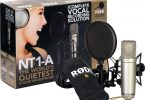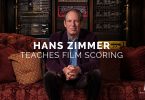How to be a better film editor – learning the craft
The most recent episode of the That Post Show hosted by Kanen Flowers was an incredibly insightful discussion between Norman Hollyn, Alan Edward Bell and Steve Cohen, three well seasoned film editing professionals. It was such a rich discussion on the craft of film editing – the three editors having chosen not to talk about technology – that I thought it would be useful to write up some of their comments from the show. But whatever you do, definitely take the time to listen to the whole hour of their wisdom.
Tips on Maintaining Perspective on your material
”Perspective is the most precious commodity in the editing suite and the one that is most easily lost”
How do you stay fresh when you’re working on a film for over a year?
– Make notes while watching the dailies – what was my reaction when I first saw that performance or camera move?
– Screen the film for others – to see it for the first time through other people’s eyes, their reactions and misunderstandings.
– Take a break from it, and (if your deadline allows) watch it a week later. Walking away from it will help you maintain perspective and see what needs work.
Tips on Watching Rushes & Editing Workflow
Watch all the dailies. Make choices. Start editing. If you don’t watch everything, how can you possibly know you’ve got all the ‘best bits’ and that you’re making the right choices. Don’t rush to the edit, rush to the rushes.
Select for performance and create the structure of the scene first, then return and finesse the cuts.
Start by watching the last circle take from any set up. If they got it and moved on then they got it in the last take. But do watch all your takes, especially if certain actors are better in their initial takes and then tend to trail off. Learning your actors can help you craft better performances.
Get your script supervisor to note down the comments, grunts and grumbles that the director makes on the set as he reacts to the performances for the first time. Use these as a helpful guide to understanding your directors mindset.
Tips on Collaborating with Directors
How to ‘crawl inside the directors head’ and make sure you’re a genuine collaborator and not just a pair of hands. (Or a button monkey as I like to call it.)
Viewing early cuts of a scene might help reveal what ideas were in an early cut of a scene that have since been removed through various sequential iterations of the edit.
Ask as many questions as you possible can to discover their sense of the film. What are they looking for in the material? What tone or style are they intending to use in the shooting of the film? What problems do they forsee? Being able to create your own cut from the material will help introduce new ideas and suggestions and a completely new perspective on the film. Asking questions as a collaborator will help ensure that you don’t devolve into a pair of hands.
But you are ultimately there to serve the director and their vision. So make sure you don’t become aggressively argumentative. The director/editor relationship is one that comes the closest to a marriage that there is in the film business. How will you have fun locked in a room 12 hours a day with this person?
“Just because you disagree, doesn’t mean you’re not going to do it their way. As much as we want to collaborate, we are in a service industry. We are working at the director’s service and the films service.”
As editors often work with their hands at the controls and their back to the director, it is critical, on a human relationship level, to turn around when talking to them. Discuss ideas face to face, rather than with the back of your head. It also helps to solidify your collaborator status and not the button monkey. If they ask for specific cuts, takes or trims, turn around in your chair and ask them ”whats your intent in doing that” and then figure out the best way to do that – which may well involve performing their specific trims and cuts. Often the only way to know if it will work, is to try it.
Tips on Better Editing in a Digital World
In a fast paced digital world finding ways to be able to take the time over your work can make a huge difference to the final product.
Anne V Coates, editor of Out of Sight, would force herself and director Steven Soderbergh to deliberately take breaks, go for walks, think things through and essentially operate in a much slower fashion than digital might otherwise allow, to increase the amount of thought that might go into an edit.
Back in the days of film editing you had to physically scroll through the previous takes to get to the one you were looking for, which gave you ample opportunity to review your material and find gems that you had forgotten you had.
Getting your cut down quickly, doesn’t mean you’re a good editor.
With crews just rolling hours of digital ‘tape’ these days you can end up with hours and hours of footage to wade through and not enough time in the day to do so. Finding a method of moving through your footage quickly without loosing track of what the intent of the scene is and pulling that out will be a key to being a successful, proficient editor.
“How can you know that you’ve gotten the moments and you’ve really supported the intent without looking through all the footage. – To start editing without watching everything is leading you to mediocrity.”






Thanks Kanen – I have corrected my erroneous spelling! Looking forward to more great shows…
Thanks for the kind words. I’m happy you like the show.
Steve is “Cohen”, by the way. 🙂